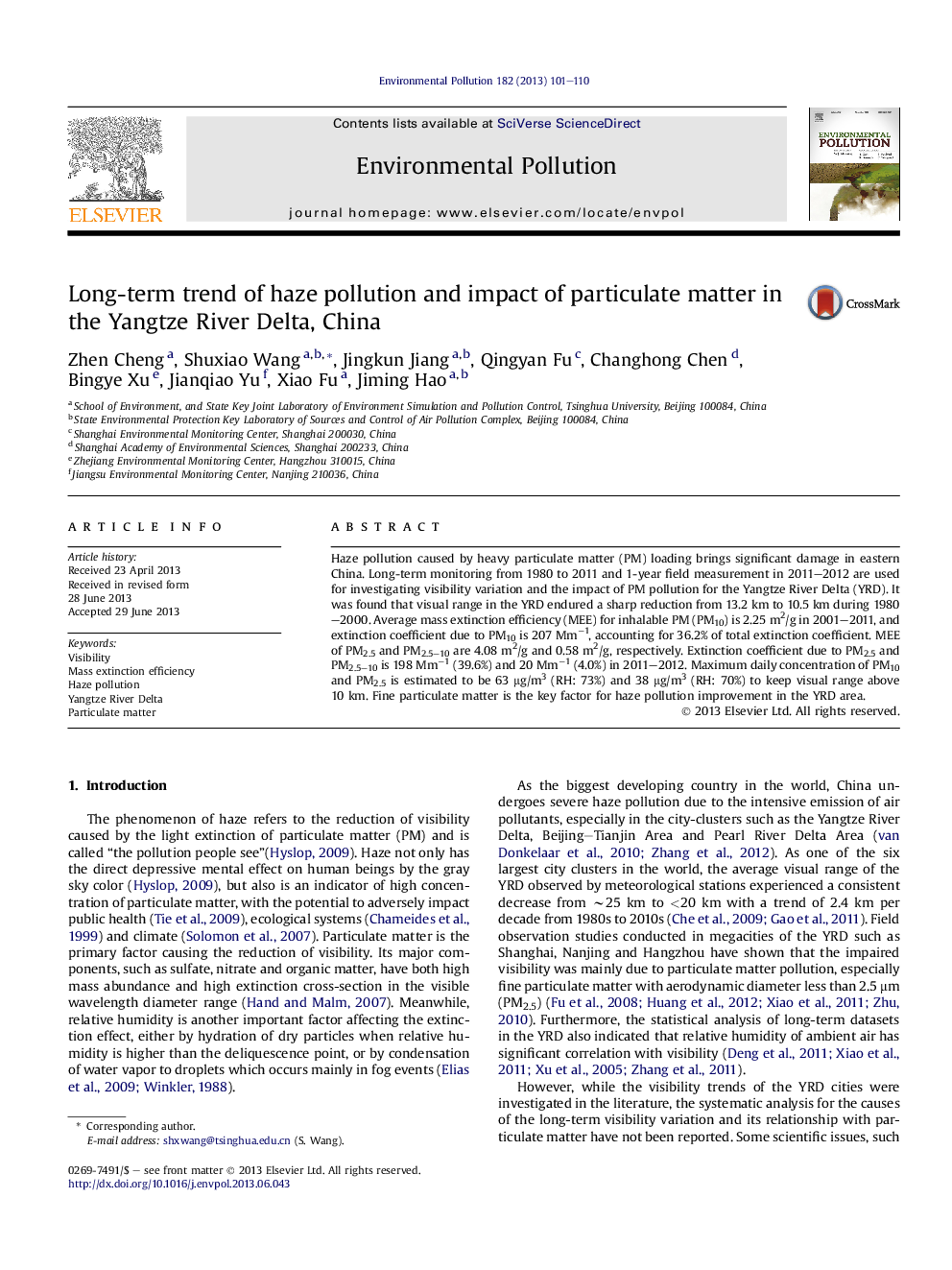| Article ID | Journal | Published Year | Pages | File Type |
|---|---|---|---|---|
| 6317029 | Environmental Pollution | 2013 | 10 Pages |
Abstract
Haze pollution caused by heavy particulate matter (PM) loading brings significant damage in eastern China. Long-term monitoring from 1980 to 2011 and 1-year field measurement in 2011-2012 are used for investigating visibility variation and the impact of PM pollution for the Yangtze River Delta (YRD). It was found that visual range in the YRD endured a sharp reduction from 13.2 km to 10.5 km during 1980-2000. Average mass extinction efficiency (MEE) for inhalable PM (PM10) is 2.25 m2/g in 2001-2011, and extinction coefficient due to PM10 is 207 Mmâ1, accounting for 36.2% of total extinction coefficient. MEE of PM2.5 and PM2.5-10 are 4.08 m2/g and 0.58 m2/g, respectively. Extinction coefficient due to PM2.5 and PM2.5-10 is 198 Mmâ1 (39.6%) and 20 Mmâ1 (4.0%) in 2011-2012. Maximum daily concentration of PM10 and PM2.5 is estimated to be 63 μg/m3 (RH: 73%) and 38 μg/m3 (RH: 70%) to keep visual range above 10 km. Fine particulate matter is the key factor for haze pollution improvement in the YRD area.
Related Topics
Life Sciences
Environmental Science
Environmental Chemistry
Authors
Zhen Cheng, Shuxiao Wang, Jingkun Jiang, Qingyan Fu, Changhong Chen, Bingye Xu, Jianqiao Yu, Xiao Fu, Jiming Hao,
